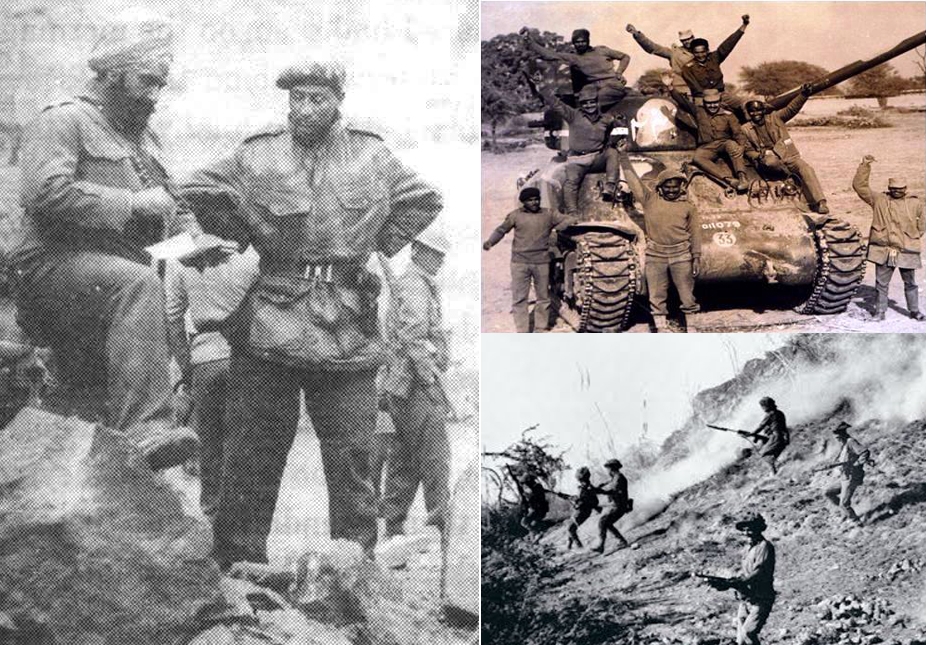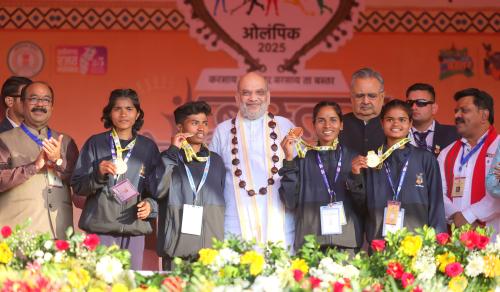VIKAS DATTA Seventy-five years ago on this day, the newly-Independent India's army fought its first big, combined arms battle, aided by air power, which not only thwarted for good the Pakistan-backed tribal invaders' threat to Srinagar, but secured almost the entire Kashmir Valley from their danger. Behind this victory was not only a canny commander, who braved his superiors' ire in taking a major gamble, but feats of many other intrepid soldiers too. A fortnight after the tribal invasion of the princely state of Jammu and Kashmir, the situation was still fluid. The brave rearguard action of the state forces' Chief of Staff, Brig Rajinder Singh Jamwal, and his small band had delayed the raiders' advance and bought time for the long-delayed accession, and Lt Col Dewan Rajit Rai, who led the first Indian Army formation into the Valley, not only secured the Badgam airstrip but by an intrepid advance, spooked the enemy and stopped his advance for the time being. Then, as more Indian soldiers began pouring in, Major Somnath Sharma on November 3 showed exemplary courage in beating back a bigger enemy force, seeking to take control over the airstrip. All the three soldiers made the supreme sacrifice in their endeavours - but the enemy was still present in strength in the Kashmir Valley, while areas in Jammu region and Ladakh were also under threat. It was early in November, when (then) Brig Lionel Protip 'Bogey' Sen, who had taken over control of the 161 Brigade, that small skirmishes against the dispersed raiders would only dissipate his limited strength and they had to be brought to a decisive battle. What he wanted to do was to bring them together and his hunch was that this would only happen once a tempting lure was dangled in front of them - an open road to Srinagar so they could roll in as a motorised convoy, which was all the better for the loot they sought. For this, he had to withdraw the redoubtable 1 Sikh - the late Lt Col Rai's battalion - which was ensconced at Patan on the Srinagar-Baramula road. However, this decision created a storm, as Brig Sen recalled in his memoirs ("Slender Was the Thread"). Not only did his commanding officer, the capable and irascible Maj Gen Kulwant Singh (Datta), storm in the very next day (November 5) and raised hell - ordering him to furnish three copies of a statement that he had taken the decision on his own authority, D.P. Dhar of the National Conference was also sent to Delhi to convince Prime Minister Jawaharlal Nehru to replace him. However, Home Minister Vallabhbhai Patel, who had gone to Srinagar, was briefed by Brig Sen, and given him a clear order to save Srinagar at all costs, stood against this and ensured he stayed in command. Brig Sen noted that his plan seemed to be working. Following the withdrawal of 1 Sikh to the outskirts of Srinagar, the penny packets of the raiders started to head back to Baramulla to regroup and mount a concerted attack. Meanwhile, fortune smiled on the Indian commander. As he was planning the disposition of his meagre forces, basically three battalions (1 Sikh, 1 Punjab and 1 Kumaon, out of which 1 Punjab could not be removed from its defensive position), augmented by some National Conference workers, who carried out intelligence and reconnaissance operations at the risk of their lives, an Armoured Corps officer suddenly walked into his operation room. Maj Inderjit Rikhye said that he had been leading the reinforcement convoy coming by road from Jammu with his squadron of armoured cars from 7 Cavalry but as the condition of the bridge at Ramban was tricky, he had left his force to reinforce it, while he made haste to come to Srinagar with just one troop (four armoured cars) and one rifle troop. This was a godsend - and though just two of the armoured cars were working, with the other two needing refurbishment, they and the rifle troop were planned to be sent behind the enemy lines - as the battle planned for November 10 too had to be advanced due to the tribals' regathering and movement. This step was not easy - Lt Noel David, who was commanding the detachment, reported that at one place the only way to cross a stream was by means of a narrow wooden bridge, which didn't appear to be able to support the cars' weight. However, in five minutes, he reported that they could cross if the side railings were knocked off, and he would take the chance. His men proceeded to do so, and even after this it was found that the bridge had just a leeway of two inches either side for the armoured cars - which needed skillful and precise driving. The dogged Lt David persevered and slowly manoeuvered both the cars across and after an anxious 20 minutes, reported that he had succeeded "but would never like to try doing it again". By November 7 morning, the cars and the rifle troop (fortunately the Jat squadron, not the Sikh squadron) were among the enemy in the village of Shalateng, and taken to be reinforcements from Pakistan. As soon as they were in position, Brig Sen ordered 1 Sikh to advance and hit the enemy hard. As they did, 1 Kumaon made a flank attack, Lt David's men opened fire from their rear, and a company of 4 Kumaon on the other attack. The Air Force also carried out some effective strafing. Attacked from three sides and above, it was a total debacle for the tribals. "The Battle of Shalateng had been won in twenty minutes from the word GO. It was a major disaster for the tribesmen. Apart from leaving 472 dead on the battlefield and a further 146 in-between Shalateng and Baramula, they had to abandon 138 civilian buses and load carriers which had transported them from the NWFP almost to the gates of Srinagar. Scattered all over the Shalateng area were a large number of weapons..." Brig Sen wrote in his memoirs. The Indian Army did not rest on its laurels but pursued the enemy through the night, and by the next morning (November 8), had retaken an abandoned and devastated Baramula, and then pushed forward to Uri. While some surviving tribesmen in heights above Uri would remain an irritant for sometime, and desperate struggles would rage in the high areas of Jammu region and the icy wastes of Ladakh for the rest of the year and the following year, and Pakistan would formally join the conflict next year, there would be no threat to the Kashmir Valley. (Vikas Datta can be contacted at vikas.d@ians.in)
Indian Army's first air-land battle that saved the Kashmir Valley
- by Rinku
- November 07, 2022 2 minutes

Kashmir










